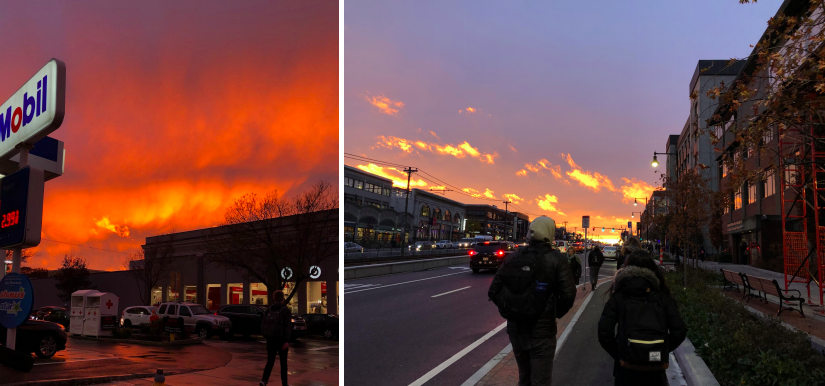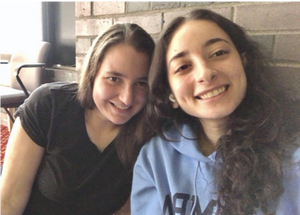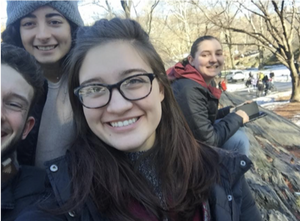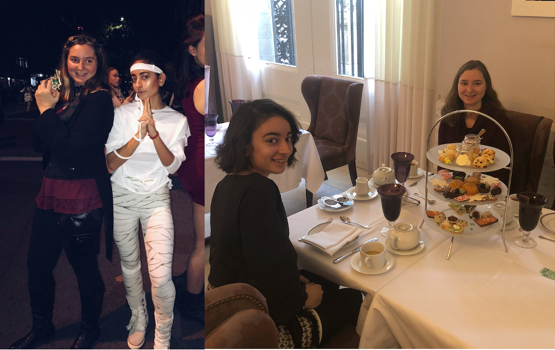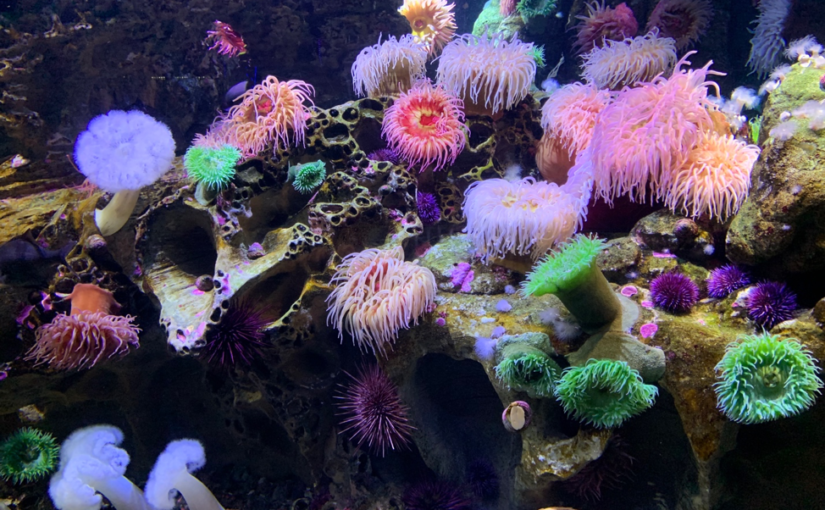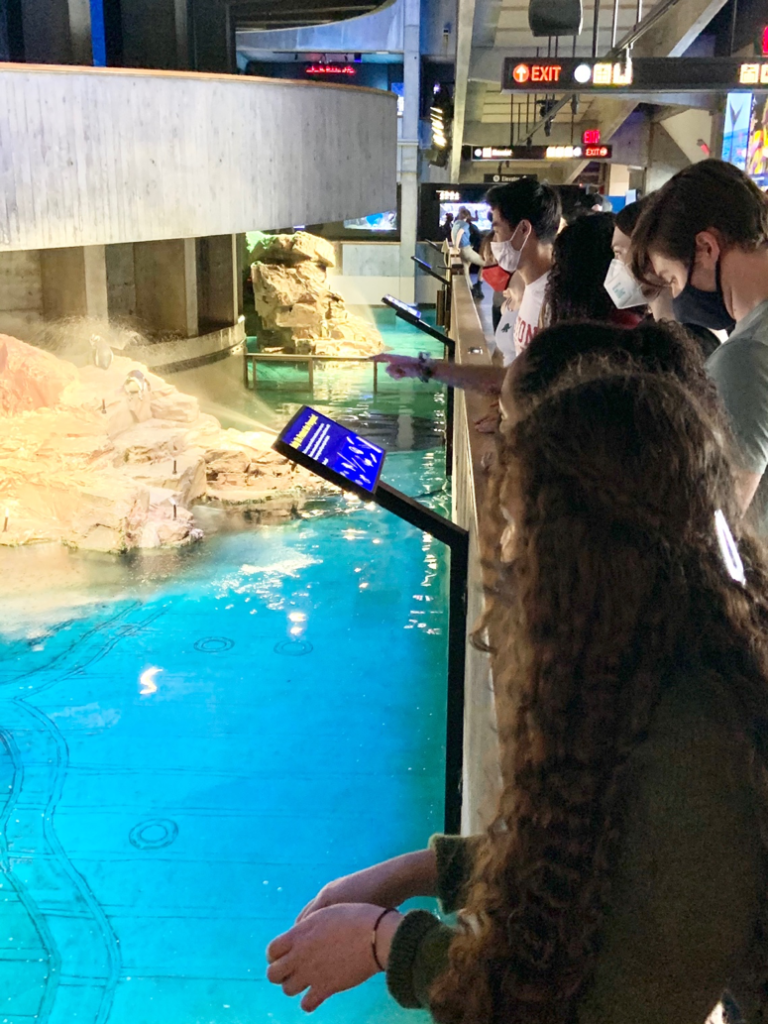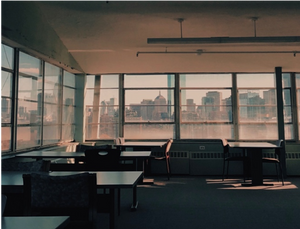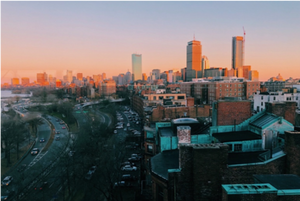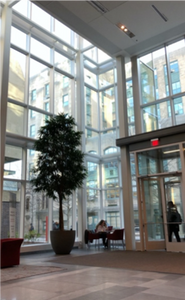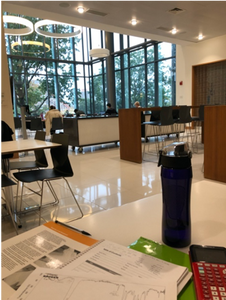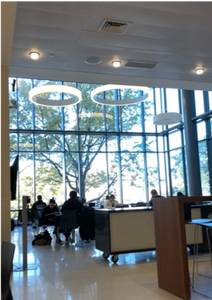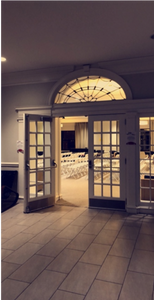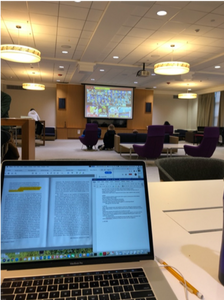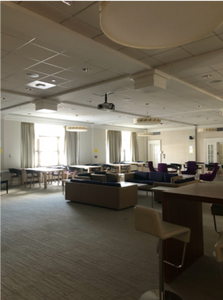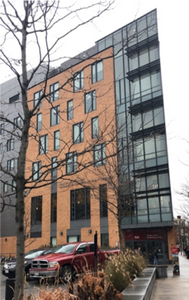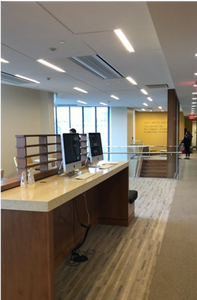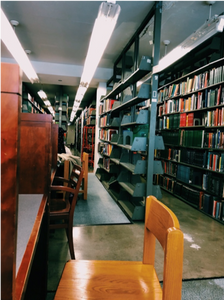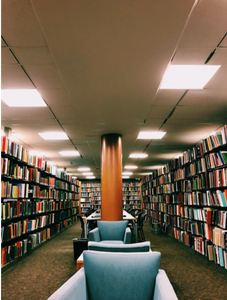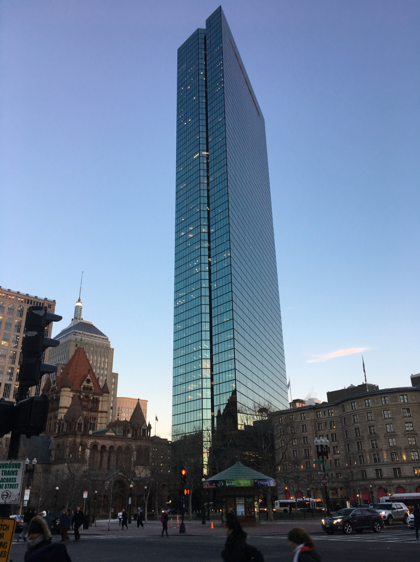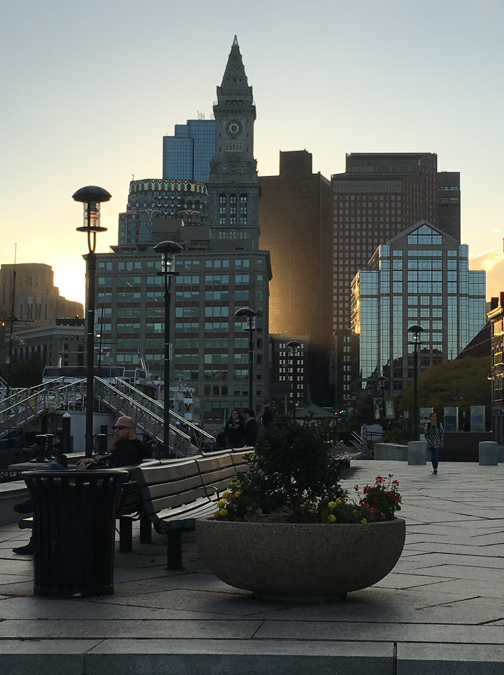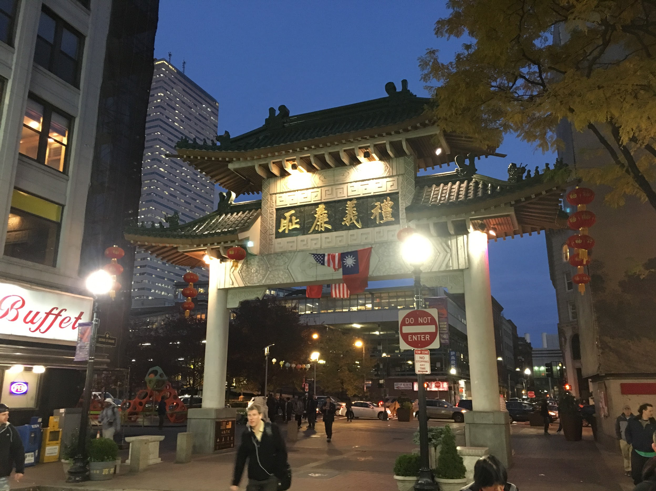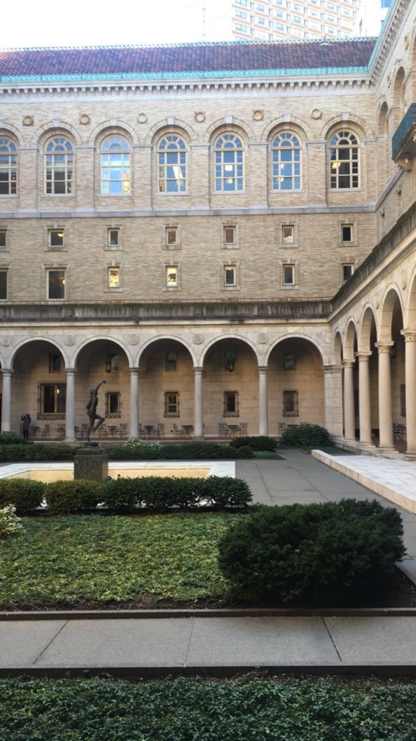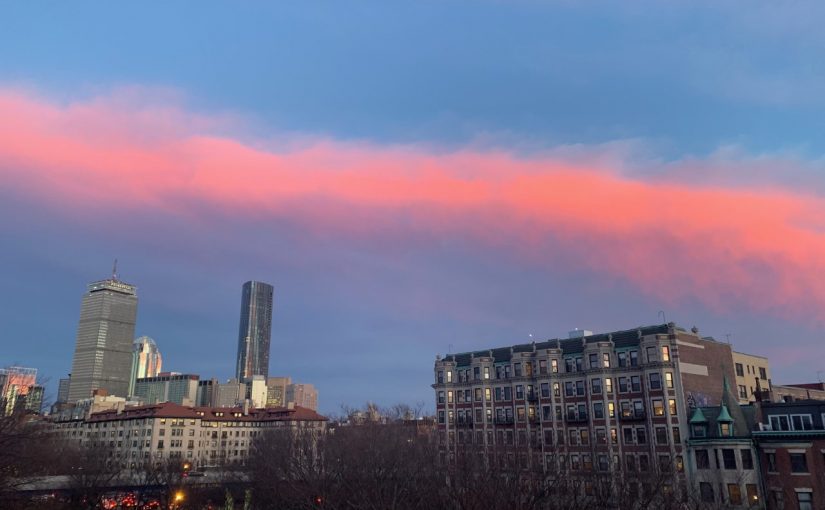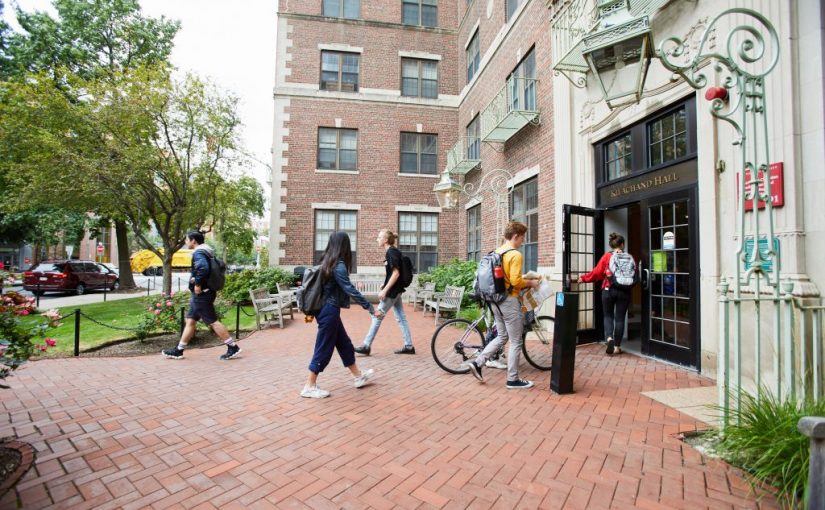By Matt Kim (CAS ‘22)
Above: Walking down Comm Ave during a sunset. The bustling atmosphere of students going about their day in West Campus really brings the city feel to life.
Boston is one of those walking cities. It’s walkable because things are close by, but it’s also walkable because the sights are so beautiful. Coming from a fairly small town myself, I was taken aback by the cityscape every time I walked to class in East Campus or to hockey practice in West. Many of you will start off your first year by walking around everywhere to get a feel of campus, and it’s the best way to do it! You get to explore the atmosphere and experience, firsthand, of life in a city college.
Whether you bike, skate, take the bus, or walk to class, there’s something for everyone. Since you’ll be living in the Kilachand dorm, you’ll be placed squarely in East Campus. If you want to make it to the other side of campus, it’s a short walk to the BU bus stop, or a pleasant 15 minute walk over. There are your Blue Bikes, where you can pay a small fee to borrow a bike if you’re really in a hurry; the bike lanes are wide and safe enough for bikers and the skateboarder/scooterer (is that a real word?). Alternatively, if you bring your own bike, Kilachand has a neat space to store it on the first floor. And of course, there’s the famous T that shoots down the entire length of campus. You can either pay per ride, or get a semester pass for unlimited use during the academic semester (found on the StudentLink). For those not familiar with the T system, it has stops all throughout BU’s campus, so it’s a quick and efficient way of travel. And not to mention, it goes directly into downtown Boston for a fun weekend with your new roommate(s) and friends!
The BU bus is my main method of transportation nowadays, since I have to travel back and forth from class to practice to research to home. The bus runs every day and during most hours of the day, so you can get around whenever you need to. You can download the BU bus app on your phone, and once you find the bus stops, it’s a piece of cake to catch a quick ride to wherever you’re going to. But walking has its perks too. You get to be surrounded by other students while walking down Baystate Road and admiring the beautiful scenery, or strolling past the BU Beach and the Esplanade, the GSU (George Sherman Union) building, and even Agganis Arena. Walking is both therapeutic and good for your health, especially after a year of staying inside. So whether you have your own wheels or just your feet, go out there and explore campus!

